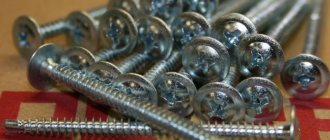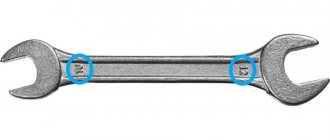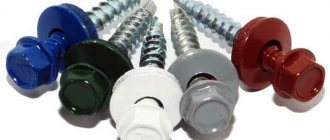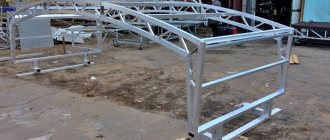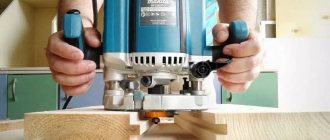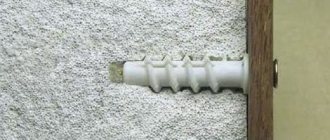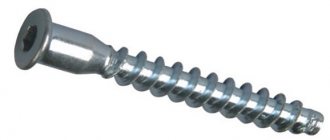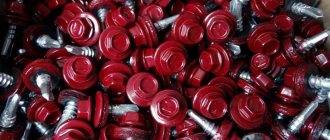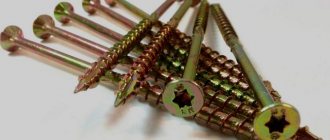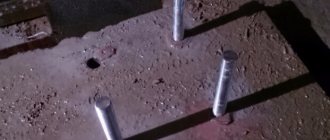Today in this article we will look at such an important topic as the correct choice of self-tapping screws. The fact is that, having communicated with consultants at various construction stores, we came to the conclusion that people often choose hardware (metal products, from the phrase) completely incorrectly, giving their choice to those self-tapping screws that cost the least. People often pay attention exclusively to length, which is fundamentally wrong.
If you have encountered the problem that when screwing or unscrewing hardware, they broke, then this was either due to low-quality screws or due to an incorrect choice.
In order to understand this seemingly complex topic at first glance, read our article further.
How to choose the right screws
So, in order to choose the right self-tapping screws, of which there are simply countless quantities sold today, you must first pay attention to the course of the thread.
- The thread stroke of self-tapping screws can be either frequent or rare.
- The frequent stroke of self-tapping screws is designed to screw them into metal surfaces.
- The rare stroke of self-tapping screws is designed to be screwed into soft surfaces such as plastic, plaster, and wood.
- Universal screws are those that can be screwed anywhere. If you don’t know what to buy, then buy universal screws.
- There are also special screws that are designed for specific tasks. A classic example is hardware with a faceted head, which is needed for installing roofing materials.
Special purpose self-tapping screws
Self-tapping screws also differ in their scope of use. Some types are universal and suitable for both fastening slats and assembling shelving. Others have a narrow specialization and the use of incorrect hardware leads to weakening of the fixation or destruction of the material.
Roofing screws
They are used to secure roofing materials whose thickness exceeds 6 mm. This can be corrugated sheets or sheets of metal tiles. The screw head is hexagon shaped for better transmission of torque from the impact wrench. There is always a washer under the head to increase the pressing area. A rubber gasket is provided under it so that the roof is sealed at the fastening points.
Self-tapping screws are always galvanized because they are exposed to precipitation. The thread is made with a tight pitch and reliably holds the roofing materials against water exposure to winds and snow loads. There can be one or two thread entries.
Self-tapping screws for sandwich panels
Since sandwich panels consist of outer sheets of steel and an inner foam core, they can be easily drilled with special self-tapping screws with a drill at the end. After it comes a thread that ensures reliable tightening.
The hex head for a socket wrench or screwdriver attachment perfectly transmits torque. Rubber and steel washers provide clamping and tightness of the connection. For fixation with self-tapping screws of this type, a minimum base thickness of 1.5 mm is required, and the maximum thickness is allowed up to 12 mm.
Self-tapping screws for window profiles
Self-tapping screw with a countersunk head and a drill, as well as a thread with an average pitch. Used for fastening a window metal profile when other elements need to be attached to it, such as a hinge or an opening limiter. Coated with yellow or white zinc to prevent rust from condensation on the window.
Self-tapping screws for concrete
This type of fastener is called a dowel. Used for fixing parts to a base of increased hardness. In addition to concrete, these can be: brick, cement screed, wall panel, etc. A light load is acceptable (lights, shelves, brackets), and for heavier objects an expansion type dowel is used. For installation, you will need to first drill a hole with a hammer drill.
The dowel comes with a countersunk and cylindrical head. Uneven threads with periodic interruption of the thread height and displacement of such sections along the axis provide fixation with increased strength. When installed in wood or drywall, it can be screwed in without pre-drilling.
Structural self-tapping screw
Available with yellow or silver zinc coating. The head can be hemispherical with a pressure washer or countersunk. Used for tightening wood in log-frame construction. Screws on without pre-drilling. This design provides 30-50% savings in installation time when compared with the perforated fastening method using drilled corners.
The flat part under the cap promotes better tightening. With an open rafter system, fasteners are not visible, which improves aesthetics - creating the feeling of an ancient technology for building houses “without a single nail.”
Furniture screws
In the documentation they may be referred to as “conv screw.” It is used only in furniture production for corner, T-shaped or overlap connections of materials (most often chipboard and MDF). It has a sparsely threaded rod with a blunt end, so installation requires preliminary drilling with a drill.
The cap is flat and has a cylindrical thickening underneath to increase the clamping force. Rotation is ensured by a hex key with recessed edges. For large assembly volumes, it is advisable to use a screwdriver with a hex bit. To hide the fasteners, plastic plugs are available in the color of the furniture.
If you notice an error, a non-working video or link, please select a piece of text and press Ctrl+Enter .
0
What types of self-tapping screws are there?
| Type of thread | Appearance of the self-tapping screw | Scope of application |
| Rare pitch (large carving) | They are used when working with wood, as well as for fastening parts made of MDF, particle boards, plasterboard and fiberboards. | |
| Frequent pitch (fine thread) | Designed for fastening elements made of hard wood, as well as for metal structures (frames). | |
| Double thread (variable thread) | Used for fastening materials with different densities (for example, for fastening drywall to a wooden base) |
1.What is a self-tapping screw?
A self-tapping screw is a fastening element in the form of a rod with an external triangular sharp thread and a head, which, while tightening, also cuts a thread in the element being connected. Self-tapping screws managed to almost completely replace ordinary nails , because the connection with their participation is much more reliable, self-tapping screws can be used to fasten not only wood, but also many other materials, and besides, you do not risk injury during work.
Diameters and lengths of self-tapping screws with a countersunk head GOST 1145-80 and a semi-countersunk head GOST 1146-80
| Self-tapping screw diameter, mm | Self-tapping lengths, mm | Self-tapping screw diameter, mm | Self-tapping lengths, mm |
| 1,6 | 7, 10, 13 | 4,0 | 13, 16, (18), 20, (22), 25, 30, 35, 40, 45, 50, 60 |
| 2,0 | 7, 10, 13, 16 | 5,0 | 13, 16, (18), 20, (22), 25, 30, 35, 40, 45, 50, 60, 70 |
| 2,5 | 7, 10, 13, 16, (18), 20, (22), 25, | 6,0 | (18), 20, (22), 25, 30, 35, 40, 45, 50, 60, 70, 80, 90, 100 |
| 3,0 | 10, 13, 16, (18), 20, (22), 25, 30 | 8,0 | 50, 60, 70, 80, 90, 100 |
| 3,5 | 10, 13, 16, (18), 20, (22), 25, 30, 35, 40 | 10,0 | 80, 90, 100 |
Installing the floor on joists
Laying the boards on pre-prepared joists is a preferable option for rooms with significant space from the floor to the ceiling. The floor is installed using this technology in two stages.
Preparing the base. For these purposes, you should prepare a planed block with a width of 50 mm or more. The workpiece must be treated with protective compounds; applying an antiseptic to it will prevent the formation of mold in the future. The laying of lags must be preceded by a stage such as arranging a waterproofing layer with any available composition.
Taking into account the thickness of the board that will be used for laying the flooring, the distance between the beams is calculated. The thinner the board, the closer to each other the logs should be placed. In particular, the width of a larch board is 25 mm, which means you need to maintain a distance of 60 cm or less, but a wider pine board (36-41 mm) is laid on blanks located at a distance of about 1 meter from each other.
The bars must be laid in a direction perpendicular to the position of the board.
Laying the boards. It should be installed in the direction away from the wall. It is important to maintain a distance of 1-1.5 cm, which will be required in the future to evenly distribute the load. The first board should be screwed to the joists using self-tapping screws in those areas that will later be hidden by the baseboard.
Lengths and diameters of self-tapping screws with a semicircular head according to GOST 1144-80
| Self-tapping screw diameter, mm | Rod lengths in mm | Self-tapping screw diameter, mm | Rod lengths in mm |
| 1,6 | 7, 10, 13 | 4,0 | 13, 16, (18), 20, (22), 25, 30, 35, 40, 45, 50, 60 |
| 2,0 | 7, 10, 13, 16 | 5,0 | 13, 16, (18), 20, (22), 25, 30, 35, 40, 45, 50, 60, 70 |
| 2,5 | 7, 10, 13, 16, (18), 20, (22), 25 | 6,0 | (18), 20, (22), 25, 30, 35, 40, 45, 50, 60, 70, 80, 90, 100 |
| 3,0 | 10, 13, 16, (18), 20, (22), 25, 30 | 8,0 | 50, 60, 70, 80, 90, 100 |
| 3,5 | 10, 13, 16, (18), 20, (22), 25, 30, 35, 40 | 10,0 | 80, 90, 100 |
How are the sizes of self-tapping screws (screws, I don’t know how to correctly) determined? What does 3x30.5x40, etc. mean?
Well, if you look at it (the screw or whatever it is) the thought arises that 3 or 5 is the diameter of the head, and 30 or 40 is the length (total). But I heard somewhere that these same “3” and “5” are the diameter of the “thread” (its protruding part).
In short, I need self-tapping screws (screws, well, you understand) that will fit the requirements: 1. Length no more than 40mm (40mm is the width of the wooden part on which a metal part about 3mm wide is hung). 2. The diameter of the head is 6-7 mm (the diameter of the hole in the metal part is 5 mm, this part must be securely fastened with self-tapping screws (4 pieces).
The first number (digit) is the maximum diameter. The second number is the total length of a self-tapping screw with a countersunk head and the useful length of a self-tapping screw with a hemispherical head.
*** At the maximum, that means the diameter is not of the rod, not of the self-tapping screw, but the diameter along the edges of the thread.. along the outer edges.. The rod, or body of the self-tapping screw, is always smaller in diameter than the self-tapping screw itself.. And the head, yes.. it is on average twice as big in diameter...
Which screws to choose for a certain load
In order to choose the right hardware depending on the load, you can contact your sales consultant and ask him to help you. Or, you can look at our table and decide on your choice before going to the store.
Different screws depending on the load are presented in the table below.
| Load, kg | Standard size of the self-tapping screw depending on the wall material, excluding the thickness of the product being fixed | |||||
| Regular brick | Concrete | Tile | Porous concrete | Tree | Drywall | |
| less than 1.0 | 3×25 | 3×16 | 3×16 | 3×16 | 3×25 | 3×16 |
| up to 5.0 | 3×25 | 3×20 | 3×25 | 3×25 | 3×30 | 3×16* |
| up to 10.0 | 4×25 | 4×20 | 4×25 | 4×30 | 3×25 | 3×16* |
| up to 20.0 | 4×50 | 4×40 | 4×50 | 4×70 | 4×50 | 4×16* |
| up to 30.0 | 5×70 | 5×50 | 5×70 | 5×70 | 5×50 | 4×16* |
| up to 50.0 | 6×80 | 6×60 | 6×80 | 6×90 | 6×60 | – |
| up to 75.0 | 8×100 | 8×80 | 8×100 | 8×140 | 8×100 | – |
| up to 100.0 | 10×140 | 10×100 | 10×160 | 10×160 | 10×120 | – |
Varieties
A characteristic feature of the main part of wood screws is a large thread pitch. Fine carvings are used only for particularly hard wood.
Self-tapping screws can be roughly classified according to three parameters.
Color
Black (phosphated) products have a rough surface and, as a result, good adhesion to wood.
Note: the downside of a good grip is the relatively large force required to screw in the hardware.
Black hardware for woodworking is usually tightened with a PH2 bit or a regular Phillips screwdriver. And [the main disadvantage is limited resistance to corrosion: despite the phosphating layer, in a humid environment the caps will quickly decorate the surface of the wood with untidy rusty streaks.
Yellow (brass-plated) fasteners have increased corrosion resistance and slightly weaker adhesion to wood (brass is a metal with a low coefficient of friction). Due to the relative high cost of the brass passivation process? their price is higher than that of phosphated ones. The head is compatible with RZ bits.
White self-tapping screws differ from yellow ones only in the way they provide anti-corrosion protection: they are coated with a thin layer of zinc. There are no functional differences between white and yellow hardware; the choice of one or the other comes down to matching the color of the surface.
Yellow and white hardware differ only in the metal of the anti-corrosion coating.
Head
Based on the shape of the cap, we can distinguish:
- Countersunk (conical head) with a cross-shaped slot. All black screws are hidden.
After screwing in, the countersunk head remains flush with the surface.
- Countersunk with a straight slot (for a flat screwdriver or bit). They are not very popular due to more stringent requirements for the quality of the bit and a greater likelihood of breaking the splines when screwing in compared to their cross-shaped counterparts.
- With press washers (a type of semi-secret ones; they provide reliable clamping of the part to a wooden base with pressure distribution over the maximum surface).
- With press washers and rubber gaskets. This type of hardware is in demand in cases where it is necessary to ensure the tightness of the connection. The most typical example is attaching corrugated sheets to the roof sheathing.
- With hex head. In addition to the shape of the head, they are distinguished by significant thickness; Accordingly, they are very durable. Usually have a zinc coating.
It’s curious: in the absence of a powerful screwdriver with a corresponding bit, products with a hex head are screwed in with a regular open-end wrench. They often successfully replace anchors; in particular, toilets and wall-mounted sinks are equipped with fasteners of this type.
Thread length
It can be complete (from the tip to the cap) or incomplete, with a smooth area in front of the cap.
- The first design option is useful in that it provides maximum joint strength when attaching a thin metal part to a wooden base.
- The second is used when fastening relatively thick wooden parts (for example, counter-battens for vapor barrier when assembling a roofing pie).
Incomplete thread.
Installation of tongue and groove flooring
This type of flooring is ideal for rooms with low ceilings. In this case, the board is installed directly on the floor, which has previously been leveled, covered with a waterproofing compound and a layer of plywood. Self-tapping screws should also be used to secure the base.
If it is planned to install it on an existing wooden floor, the board should be installed in the opposite direction in relation to the existing floor. You should first check the ability of the board to withstand additional loads, and only then install it and attach it to the base.
